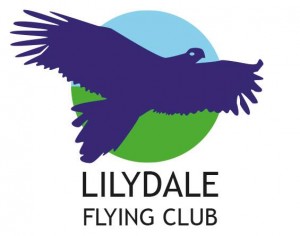-
AuthorPosts
Tricky Take-off at YPOK
-
December 8, 2015 at 12:09 pm #596
 SteveHitchenLFC Moderator
SteveHitchenLFC ModeratorI found myself in a tricky situation at Porepunkah on Sunday morning. I was in an Arrow with three other people, half tanks and about 32 kg of bags in the back. The strip was a downhill run on grass with zero head wind, but the temperature was about 30 degrees at 10.00 am and the strip only 730 metres long. The density height was about 2600 feet. That would work against me, as would the grass and the strip length. The downhill run was going to work in my favour. The question: how much flap do I use?
One stage would help on grass, and wouldn’t create too much drag. A second stage would get me airborne sooner, but at a slower speed in a heavy aeroplane on a hot day … I could see her settling back on to the runway again. As I lined up, I pulled on a second stage, then dropped it off again. I was really in two minds, and the p-charts didn’t account for all these factors.
I wanted speed, so I left the flaps at one.
Hold the brakes, run-up full power and hold it there for a few seconds until the MAP settled. Brakes off and away we went. In the run, I was over-conscious of not holding too much back-stick, which I was afraid would kill the airspeed, but the counter to that is an increase in friction on the nosewheel, which could also kill the airspeed. I was happy with the acceleration so held it there and rotated passing 70 KIAS. Up we went … and stayed up. I stowed the undercart but kept the flap and pushed the nose down to build speed for the climb. Away home.
In hindsight, I probably used all but 100 metres of Porepunkah to get off. My decision to relax the back pressure is one I still haven’t reconciled yet. Perhaps decreasing the nosewheel friction by keeping back-stick may have helped, but would it have been enough to compensate for the loss of airspeed caused by the nose-high attitude? I certainly wouldn’t have done it on a level runway, but I considered the downhill run enough to compensate. The answer: who knows unless I go back to Porepunkah in the same conditions and try them both again.
It goes to show you how many variables there are in flying and what we have to take into account to sometimes fly safely.
December 12, 2015 at 2:45 pm #602 Dave MartyLFC Moderator
Dave MartyLFC ModeratorI reckon 1 stage flap was the correct choice, unless the clearance after take-off was limited, in which case you might have had foliage in the undercarriage either way
December 15, 2015 at 4:44 pm #606 SteveHitchenLFC Moderator
SteveHitchenLFC ModeratorHaving spoken to some people around LFS, the idea was touted that I could have started with one and gone to two at rotation time. This would have kicked her into the air at a faster speed, not having used the second stage in the take-off run.
December 23, 2015 at 10:24 pm #614 AnthonyJonesLFC Member
AnthonyJonesLFC MemberI’m a bit hesitant to plan on changing flap during the end of a take off, there is too much going on to be doing what could have been done earlier. Also the attitude will change and a chance of a bounce if not handled correctly.
The additional drag from flap has little effect at slow speeds, so by the time it does take effect, you should be able to ascertain if there is sufficient runway or not. Nominating a go/stop location that gives sufficient length for braking may help.
I recently took off from Cameron Corner which has 700m of dirt in CJR on a warm midday. I was anxious about that and started to throttle up when still taxiing down the highway. I used two stages and significant back pressure until the nose wheel began to lift slightly, then consistently relaxed back pressure as speed increased so the wheel is only just touching or not touching the surface. Was at about 50-100′ AGL when crossed the threshold.
January 12, 2016 at 9:24 am #620 RichardHazeltineLFC Member
RichardHazeltineLFC MemberIn the Lance, particularly when heavy, I will often take on a second stage of flap at about 60 65 knots. This seems to launch her into the air very well. I haven’t found any issues with pitch control at all; once airborne, I slightly lower the nose, gain speed, re-commence a proper climb then lose the flaps.
This has proven very helpful up north is high temps and short strips.
March 17, 2016 at 10:35 am #710 Russ GrosvenorLFC Moderator
Russ GrosvenorLFC ModeratorI’m a bit late to this party having had a few other things on my mind lately. I can recall somewhere in my training reading that adding extra flap from the recommended takeoff setting doesn’t help much, if at all, the increased drag offsetting any advantage of extra lift. Now I have zero experience in flying the ‘big’ planes that you guys are zipping about in, but for me, I would keep the one stage of flap and on rotation stay in ground effect to build up speed before starting the climb.
Just out of interest, I have in the past when doing touch and go, forgotten to reset the flaps after landing (from two stages) only realising my mistake when retracting flaps on climb. Obviously my trim setting was for the two stages but I can’t say I noticed any difference in performance.
-
AuthorPosts
- You must be logged in to reply to this topic.
